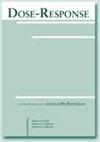Condiment Recipes Lead to Reduced Generation of Carcinogenic Polycyclic Aromatic Hydrocarbons in Duck Variety Meat During Charcoal Grilling
IF 2.3
4区 医学
Q3 PHARMACOLOGY & PHARMACY
引用次数: 0
Abstract
The current study aimed to evaluate the impact of charcoal grilling in the generation of various polycyclic aromatic hydrocarbons in the tissues of 5 different organs (leg, chest, wings, liver, and heart) of falcated ducks ( Mareca falcata) before and after pasting them with different condiment recipes (R1, R2, R3, and R4). All condiment-pasted and control samples before/after charcoal grilling were pursued in RP-HPLC for quantification of unknown PAHs. Tissues from grilled raw leg meat of the control sample showed significantly higher ( P ≤ .05) concentration (42.40 ng/g) of overall PAHs as compared to all other grilled samples. However, overall PAHs concentration (9.99 ng/g) in charcoal grilled tissues of leg meat pasted with R4 condiment recipe was decreased 76.43% significantly ( P ≤ .05) as compared to all other recipes of pasted charcoal grilled samples. All PAHs, particularly naphthalene, fluorene, phenanthrene, and acenaphthalene were decreased significantly ( P ≤ .05) to none detectable level in all tissue samples when grilled after treating with R4 condiment recipe. All condiment recipes reduced total PAHs level below MRL’s set by the international guidelines. Recipe R4, a rich source of antioxidants, significantly neutralized and reduced the generation of PAHs in duck leg meat tissue sample during wood charcoal grilling.调味料配方可减少木炭烧烤过程中鸭肉致癌物多环芳烃的生成
本研究旨在评价不同调味料配方(R1、R2、R3、R4)粘贴前后炭烤对falcata鸭(Mareca falcata) 5个不同器官(腿、胸、翅、肝、心)组织中各种多环芳烃生成的影响。采用反相高效液相色谱法(RP-HPLC)对烤制前后的调味糊和对照样品进行未知多环芳烃的定量分析。对照烤制生腿肉组织中总多环芳烃浓度(42.40 ng/g)显著高于其他烤制样品(P≤0.05)。与其他配方相比,R4调味料糊制的腿肉炭烤组织中PAHs总浓度(9.99 ng/g)显著降低76.43% (P≤0.05)。经R4调味配方处理后,所有组织样品的多环芳烃含量,尤其是萘、芴、菲和苊均显著降低(P≤0.05)至无检出水平。所有调味品配方的多环芳烃含量均低于国际标准规定的最高限量。配方R4富含抗氧化剂,可显著中和和减少木炭烧烤过程中鸭腿肉组织样品中多环芳烃的产生。
本文章由计算机程序翻译,如有差异,请以英文原文为准。
求助全文
约1分钟内获得全文
求助全文
来源期刊

Dose-Response
PHARMACOLOGY & PHARMACY-RADIOLOGY, NUCLEAR MEDICINE & MEDICAL IMAGING
CiteScore
4.90
自引率
4.00%
发文量
140
审稿时长
>12 weeks
期刊介绍:
Dose-Response is an open access peer-reviewed online journal publishing original findings and commentaries on the occurrence of dose-response relationships across a broad range of disciplines. Particular interest focuses on experimental evidence providing mechanistic understanding of nonlinear dose-response relationships.
 求助内容:
求助内容: 应助结果提醒方式:
应助结果提醒方式:


